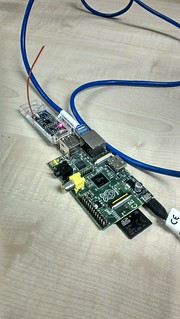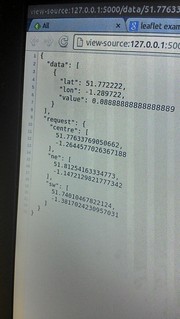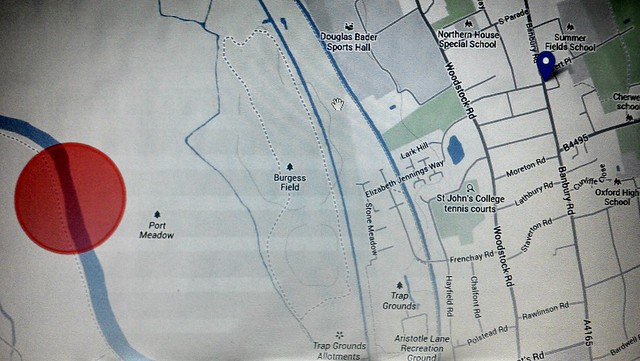Last Saturday I was at the first Sushack, a hacking day centred on sustainability and environmental issues and hosted by 2degrees in Summertown, Oxford. It was great fun: a long day, but they kept us well-fuelled throughout with pastries, burritos and pizza.
Hack days usually consist of several unrelated projects, each of which can be worked on by separate teams and then have a competition at the end. But it was clear early on that LoveHz's idea of doing something with a distributed sensor network across Oxford's whitespace region was attracting most people.
So we all decided to split into teams as usual, but for our projects to basically work together as a chain. That is, each successful project would pass on a result to the next project along; but that each project could also work with dummy results, so if any link in the chain wasn't complete, the separate projects would still hold together.
Here's what our five teams proposed, in turn:
- Assemble a depth (or distance) sensor and make it send basic data on a short-distance radio frequency.
- Program a Raspberry Pi endpoint to accept data from a RF receiver and re-broadcast it on the internet (in the long term, on a whitespace mesh; for now, by ethernet.)
- Build a webservice to take this data and store it for one or many sensors.
- Build an API for presenting this data intelligently, sliced up in a useful way.
- Build a completely independent website on top of the API, showing how the data could be repurposed.
There's more information on the team breakdown on the Sushack Github wiki.
We envisaged each of these teams ultimately linking up: but to some extent, on the day, each of them tried to work separately. Certainly the 5th team - which consisted of the 3 Ms: Max, Michael and, er, me - was intended to work as separately as possible from anyone else upstream, to simulate a third party repurposing the data. In theory at least, each team could have its own success, and it would just be a nice-to-have for us all to succeed.
Guess what? It all worked. Below are a few photos of what we built on the day: team 1's sensor; team 2's Pi basestation; team 3 and 4's JSON data output; and team 5's end-user website:




You can imagine maybe sitting at an office in Summertown (the blue marker) and checking during the day, to see if the river by your house was in danger of flooding: the red circle suggests it might well be. In our example, the circle turned red whenever a cup or a hand was placed over the sensor; but the point is, it all worked.
The future of this project itself is - as with all hackday aftermaths - uncertain, although we did thrash out a couple of possibilities, which depended very much on either getting funding, or getting better resources to help a community of whitespace-consuming flood-alerting citizens get themselves mobilized. Regardless, the day was incredibly inspiring and tremendous fun; and whatever happens, all of the code is publicly available, and hopefully we'll be looking to add some kind of open-source licence on it soon to keep it that way.
Thanks again to everyone involved, and to 2degrees for having us!

Comments
jp.stacey
Fri, 08/11/2013 - 11:22
Permalink
Max Glenister has blogged
Max Glenister has blogged about Sushack in more detail.